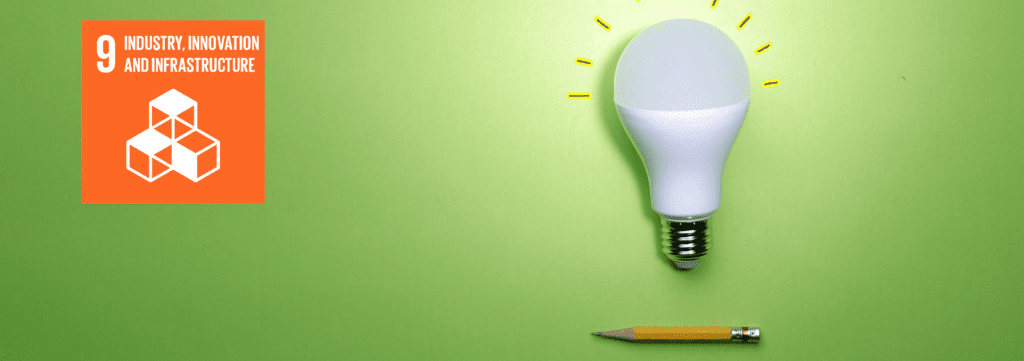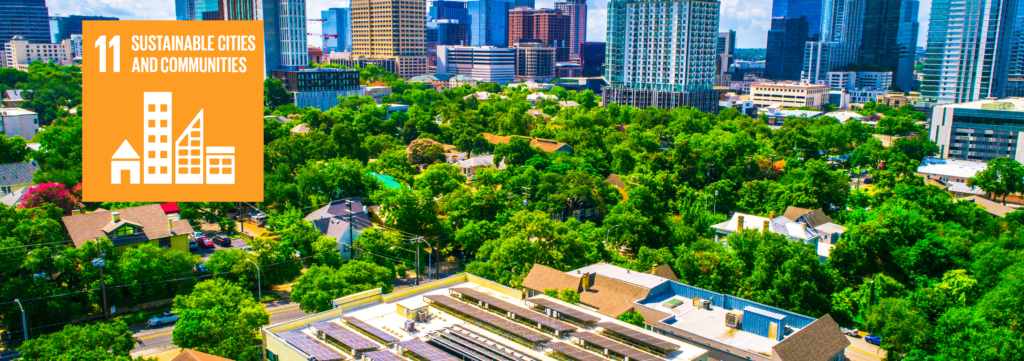Your cart is currently empty!
Accelerating India’s Sustainable Development Goals with EVs: A Policy-Driven Approach
Posted by
–
Electric vehicles (EVs) are playing an increasingly important role in India’s transportation sector. This shift towards EVs holds the potential to contribute significantly to the country’s progress on several key UN Sustainable Development Goals (SDGs). By integrating EV adoption with broader SDGs, India can strategically leverage its renewable energy potential to power electric vehicles, thus reducing reliance on imported fossil fuels and enhancing energy independence. This integration will not only reinforce India’s commitment to sustainable development but can also position the country as a global leader in clean transportation, innovation, and climate action.
Championing SDG 7: Affordable and Clean Energy
SDG 7 underscores the importance of transitioning towards sustainable energy sources to mitigate climate change and ensure universal access to clean and reliable energy. In India, a critical policy intervention is required to address the nation’s dependence on fossil fuels, a major hurdle in achieving this goal. The transportation sector, a significant contributor to greenhouse gas emissions, stands as a key area for reform. Recognizing this, the Indian government has implemented the Faster Adoption and Manufacturing of Electric Vehicles (FAME) scheme to tackle the challenge head-on. FAME II offers financial incentives to both EV manufacturers and buyers, thereby promoting domestic production and consumer adoption of electric vehicles. Through initiatives like FAME II, India aims to accelerate its progress towards SDG 7 by fostering the widespread adoption of clean and affordable energy solutions in the transportation sector.

Furthermore, a robust charging infrastructure network is crucial for seamless integration with renewable energy sources like solar and wind. This aligns with SDG 7. A key concept here is Vehicle-to-Grid (V2G) technology, where EVs can store excess renewable energy during off-peak hours and supply it back to the grid during peak demand periods.
The global energy crisis has spurred a renewed focus on renewable energy sources. Many countries are aiming to diversify their energy mix and reduce reliance on fossil fuels. This presents a significant opportunity for India. By capitalizing on this global trend, India can explore collaboration on research and development of clean energy technologies, including battery storage solutions specifically for EVs. Additionally, initiatives like the National Green Hydrogen Mission can pave the way for the exploration of hydrogen fuel cell EVs, offering an even cleaner alternative to traditional gasoline-powered vehicles.
India can position itself as a leader in the global shift towards clean energy by actively participating in collaborative efforts on research and development of clean energy technologies. The National Green Hydrogen Mission presents an exciting opportunity to explore hydrogen fuel cell EVs and further reduce dependence on fossil fuels.
Electric Vehicles can Assist in Progress on SDG 13: Climate Action
SDG 13 aims to take urgent action to combat climate change and its impacts. The Indian government recognizes the role of EVs in achieving this goal, as they help reduce greenhouse gas emissions and air pollution. FAME II is a policy actively promoting cleaner transportation solutions, and tax exemptions and reduced import duties on EVs make them more affordable for consumers, further accelerating their adoption.

India’s rapidly growing economy and present status as the world’s most populous nation present a unique challenge. While road transport expansion typically fuels socio-economic development, as seen in many countries, India faces the consequence of “burgeoning emissions of CO2 as well as air pollutants such as nitrogen oxides (NOX) and fine particulate matter (PM2.5)” due to its reliance on traditional vehicles. Road transport currently contributes 12% of India’s energy-related CO2 emissions and significantly impacts urban air quality. The International Energy Agency (IEA) forecasts, without significant policy changes, energy use and CO2 emissions from road transport could double by 2050. This scenario poses a serious threat to achieving SDG 13.
The implementation of FAME II is projected to result in significant energy and carbon savings. If all eligible vehicles under FAME II are deployed, it could lead to net savings of 5 million tons of oil equivalent (Mtoe) and 7 million tons of CO2. These savings highlight the environmental benefits of transitioning to electric mobility.
By 2030, India aims to achieve impressive EV sales penetration rates, targeting 30% for private cars, 70% for commercial cars, 40% for buses, and 80% for two- and three-wheelers. These ambitious targets underscore India’s commitment to a sustainable and cleaner mobility future.
The NITI Aayog states that large-scale EV adoption, driven by the above policies, could lead to a substantial reduction of CO2 emissions from the transportation sector by 2030.
Powering Innovation for SDGs 9 & 8 with Electric Vehicles

SDG 9 focuses on building resilient infrastructure, promoting inclusive and sustainable industrialization, and fostering innovation. Integrating EVs into the energy mix is a significant opportunity for innovation in this area. A key challenge is the limited availability of charging infrastructure, which the government is addressing by creating a policy environment that encourages collaboration between public and private sectors for establishing a robust charging network across the country. This approach aligns with SDG 9, as it fosters innovation in infrastructure development and supports sustainable industrialization.

Another challenge is the upfront cost of EVs. Here, policy can play a role in promoting innovation, another aspect of SDG 9. By incentivizing research and development in battery technology, the government can help bring down the cost of EVs, making them more accessible to a wider consumer base. Furthermore, growth in EV-related industries like battery manufacturing and charging infrastructure development, spurred by policy initiatives, can create new job opportunities, contributing to SDG 8.
Electric Vehicles Enhance Public Health (SDG 3) and Sustainable Cities (SDG 11)
SDG 3 aims to ensure healthy lives and promote well-being for all, at all ages. It addresses all major health priorities, including reproductive, maternal, newborn, child, and adolescent health; communicable and non-communicable diseases; universal health coverage; and access for all to safe, effective, quality, and affordable medicines and vaccines. SDG 3 focuses on preventing needless suffering from preventable diseases and premature death, with priority given to regions with the highest burden of disease and neglected population groups and regions.

Electric vehicles (EVs) offer significant public health benefits, aligning with SDG 3, by contributing to improved air quality, a major concern in Indian cities. Air pollution was responsible for over 1.66 million deaths in India in 2019 and 1.64 million in the preceding year (Statista, 2023). By promoting EVs through policy interventions, the government can significantly improve public health outcomes by reducing tailpipe emissions and improving air quality.
Additionally, EVs are quieter than traditional vehicles, leading to reduced noise pollution. This quieter environment fosters more liveable and sustainable cities, aligning with SDG 11.

Globally, there is a growing recognition of the negative health impacts of air pollution. Many countries are implementing stricter emission standards for vehicles and industries.
In India, there is an increased focus on air quality improvement measures, including stricter emission regulations (read BS-VI) and initiatives to promote cleaner fuels. These developments create a favourable environment for the adoption of EVs, which can significantly contribute to cleaner air in Indian cities.
India can leverage the recent focus on air quality to further promote the adoption of EVs. Public awareness campaigns can highlight the health benefits of EVs in reducing air pollution. Furthermore, stricter emission standards for traditional vehicles can incentivize the shift towards cleaner transportation options like EVs.
By prioritizing the development of robust charging infrastructure, particularly in urban areas, India can create a more EV-friendly ecosystem and encourage wider adoption. This will not only contribute to achieving SDG 3 by improving public health but also support the development of cleaner and more sustainable cities, aligning with SDG 11.
A Policy-Driven Path to a Sustainable Future with EVs
The future of EVs in India is bright. By prioritizing sustainable development and renewable energy goals, India can accelerate EV adoption. Overcoming challenges will require continued focus on innovation and collaboration. India’s proactive stance in implementing policies like FAME II reflects a broader vision for a shared, clean, and connected mobility ecosystem. The country’s efforts underscore the importance of stakeholder engagement to fully realize the benefits of initiatives like FAME II and drive the widespread adoption of electric mobility. By leveraging the power of electric vehicles, India can achieve a cleaner, greener, and more sustainable future, making significant progress on several key SDGs. The journey towards a sustainable transportation landscape will require continued government support, industry collaboration, and a collective commitment to innovation. As India paves the way for a more sustainable future, electric vehicles are poised to be a transformative force, shaping a cleaner and healthier tomorrow for all.





Leave a Reply